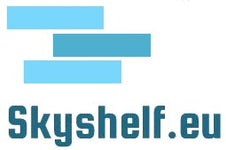Download - Téléchargez
Notre nouveau Catalogue 2025
Félix Amiot was born in Cherbourg on 17 October 1894 and died in Suresnes on 21 December 1974. He was a French industrialist and builder of aircraft, some of which served in the French air force during the Second World War, and of fishing, pleasure and naval boats in Cherbourg1, including the Combattante speedboats.
In 1908, his family left Cherbourg and moved to Issy-les-Moulineaux in the Paris suburbs, where the pioneers of aviation - Blériot, Voisin and the Farman brothers - were setting up their hangars and testing their machines, on a training ground used by cavalry regiments. This proximity encouraged him to take the plunge. In 1912, in a garage near the field, Félix Amiot built his first aircraft, the Amiot 01.
In September 1913, he filed his first patent for a ‘distribution system for fixed or rotary two- or four-stroke internal combustion engines’.
In September 1914, Félix Amiot enlisted to go to the front. In October 1915, he was recalled to the rear at the request of Morane-Saulnier. It was there that he developed a process for assembling metal parts by stamping, which was of interest to the aeronautical industry and attracted the attention of Louis Loucheur, who was in charge of defence industry issues within the government. Loucheur offered Amiot the chance to manage an aircraft manufacturing plant. With financial help from Pierre Wertheimer, who owned Chanel and Bourjois perfumes, Amiot founded his first company, Société d'emboutissage et de constructions mécaniques (SECM). SECM manufactured and repaired Morane-Saulnier, Breguet and Sopwith aircraft.
Amiot developed bombers; its new models, the 370, 350 and 340, were recognised and admired: between September 1937 and August 1939, the Amiot 370 flown by Commandant Maurice Rossi broke a series of 11 speed records over 1,000, 2,000 and 5,000 m and with loads of 500, 1,000 and 2,000 kilos. In August 1938, the Amiot 340 prototype was chosen by General Vuillemin, Chief of Staff of the French Air Force, for a diplomatic visit to Berlin. More than 1,800 of the Amiot 350 and its derivatives were ordered by the French Air Force from 1938 onwards. SECM received numerous requests to acquire the licence to manufacture the aircraft or to order it.
On 3 June 1940, at Le Bourget, the workshops and factories were severely bombed. The Germans occupied them, plundered them extensively and transferred them to Junkers. Amiot financed a network out of his own pocket, which succeeded in smuggling a dozen people to North Africa and passing on intelligence to the British. Unfortunately, the network was dismantled in May 1943 when the Gestapo arrested its leader, Yves Maurice, in Perpignan.
Amiot joined forces with the Junkers Flugzeug-und-Motorenwerke plant to build 370 Junkers Ju 52 transport aircraft. After the Liberation, the site built these aircraft under the name Amiot AAC.1 Toucan.
Amiot emerged from the war in good financial health. However, on 6 September 1944, he and the SECM management were arrested on charges of collaboration and anti-social behaviour, before being quickly released. In November 1944, SECM was requisitioned, a requisition that was transformed into nationalisation in 1946 through an amicable sale to the State, putting an end to its aeronautical activities.
After the war, he turned to shipbuilding. He designed military launches that the company exported all over the world. Some of these became famous under the name of the Cherbourg launches, when they were taken by Israel, which had ordered them, against General de Gaulle's embargo order.


L'Amiot 144 était une amélioration du bombardier Amiot 143 dont il reprenait l'architecture générale.Il fut équipé d'une tourelle affinée dans le n...
Afficher tous les détails